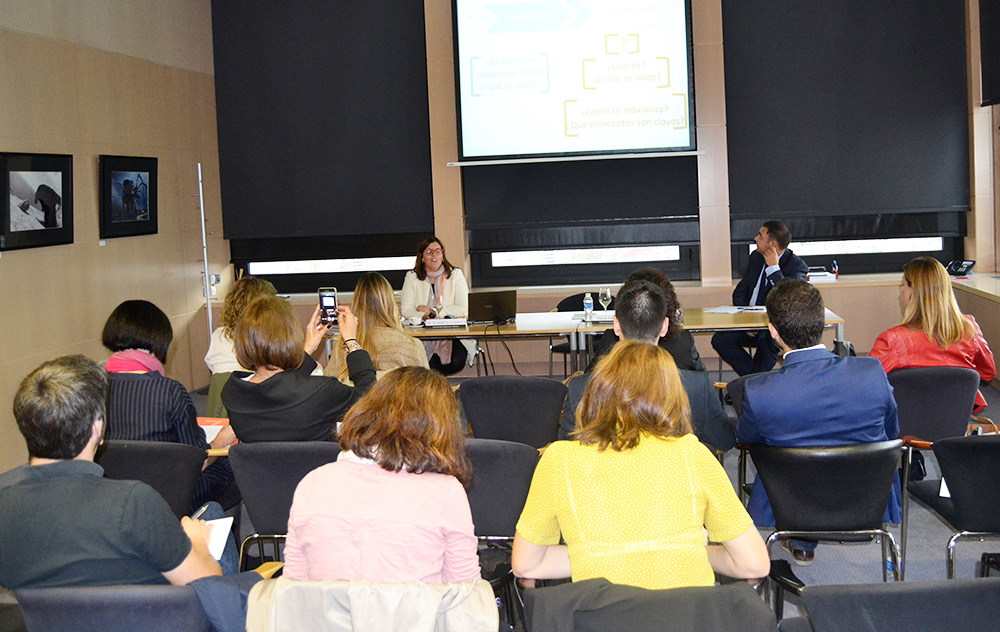EADA and the SERES Foundation develop a tool to measure the social impact of SR actions
The new tool IC - EADA SERES measures well-being and quality of life

PhD. Elisabeth Garriga at the presentation of the
new tool to measure organizations' social impact.
Nowadays, any corporate action can be measured and evaluated. For example, Big Data has opened several opportunities in this sense, allowing many companies to instantly analyse the launch of a new product or a strategic change. However, for Social Responsibility (SR) programmes, measuring social impact is still in the early stages. Measuring social impact is complex and multidimensional, as it involves a range of elements and interest groups. It also means having metrics on how to improve society.
Optimising social impact
To solve this problem, EADA and the SERES Foundation –which clusters more than 125 companies and institutions committed to social change– have created a new measuring tool that seeks to optimise the social impact of actions carried out by any organisation, whether a company, entity or social enterprise. This is the IC – EADA SERES tool, which can be used by SR action managers to measure and identify which elements optimise social impact.
The model has 12 stages ranging from the initial design stages –properly defining the social problems to be solved, along with the objectives to achieve– up to index calculation –including all aspects of managerial efficiency and the effectiveness of this programme–. PhD Elisabeth Garriga, director of the EADA Corporate Sustainability Impact Centre, believes “we must start to talk about the effectiveness and efficiency of the SR programmes as if referring to any other company project.”
This tool underscores the importance of measuring social programmes from the early stages of their design. For the EADA professor, “social impact cannot be expected if not planned during the early stages, corresponding to definition of the problem, selecting objectives, choosing partners, and establishing the programme’s logical framework." She adds that “social impact should be measured when an adequate time frame has passed (for impact to take place) and without the intervention of other bodies and institutions in the same group of beneficiaries (attribution to others)”.
Capabilities approach

The main differential value of the new EADA and SERES Foundation tool lies in the metrics used to measure well-being and quality of life. To quantify this variable, thus far intangible and multi-dimensional, both institutions have used the capabilities theory of Amartya Sen, winner of the Nobel Prize for Economics in 1998. This economist focuses on the concept of capabilities as an indicator of well-being and quality of life for people: the more capable, the better the quality of life. This focus allows capabilities to be measured at several levels: personal, family, social and work.
Sen believes that well-being and/or development are related to the things that people can actually do or be, understood as real opportunities to choose and live a life deemed meaningful. It also considers personal (such as age or health), social (social rules and habits) and environmental (climate, geography, physical conditions) limitations, in addition to subjective aspects (satisfaction and perception of satisfaction).
“Amartya Sen’s capabilities approach allows well-being and quality of life to be assessed with greater explanatory and comprehensive powers than any other measurement,” says Garriga. It is because of this, adds Garriga, that “this is an ideal framework for assessing the well-being produced by the SR programmes for the beneficiaries of such programmes, also allowing predictions to be made and several SR programmes to be compared.”
Professor Elisabeth Garriga is currently working on a user-friendly, intuitive software program for all companies or entities to measure and optimise the social impact of their social programmes.
